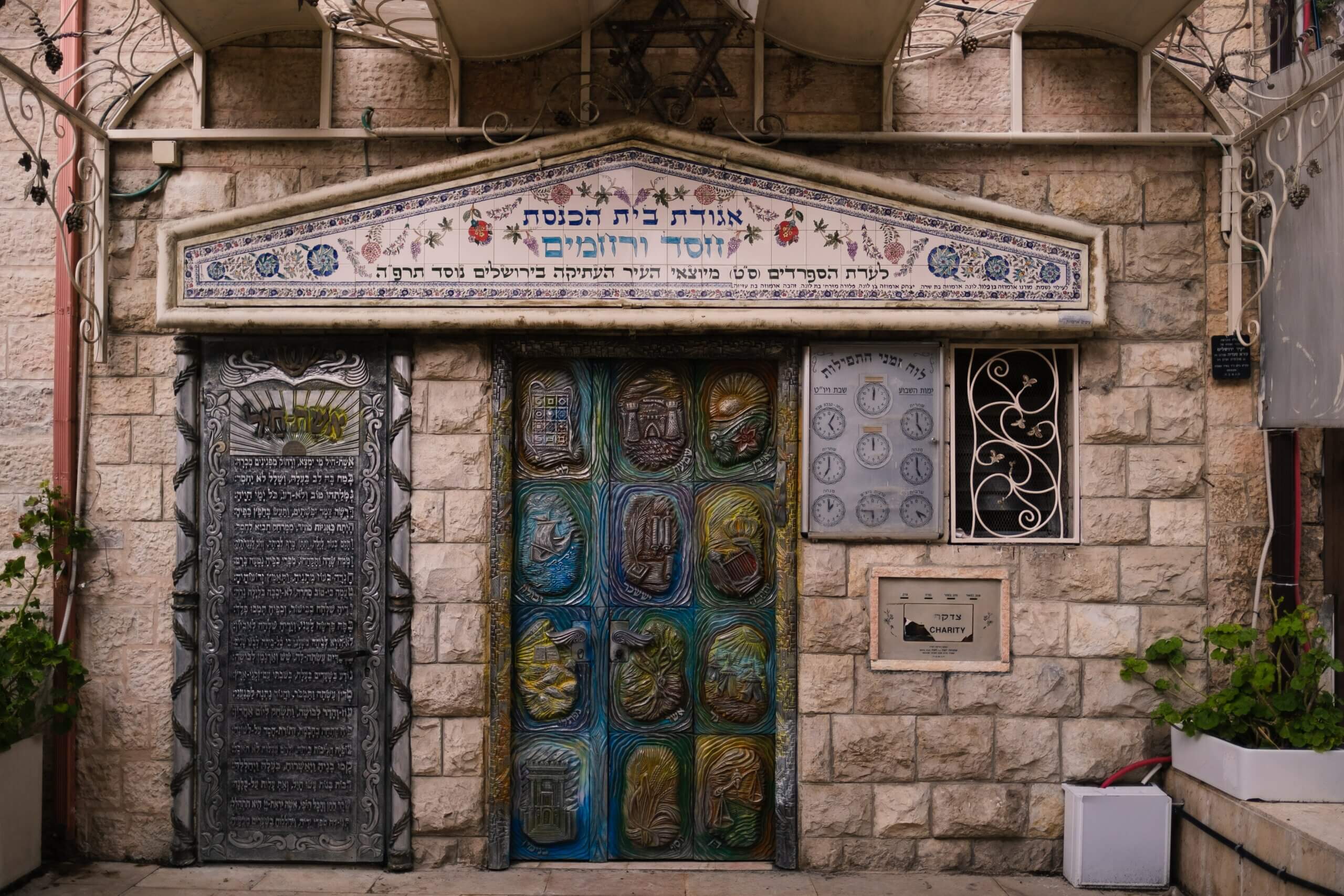
Photo by Levi Meir Clancy on Unsplash
Going to a Wedding
We climb the steps of the synagogue when Annie asks, What is Jewish?
She is the child of a Jew, a son I raised to tell a story
with the fanfare of a performer on The Moth Radio Hour.
A son who cried when his fish died, felt heartbreak over
a broken relationship, pulled a college friend from the brink,
and bloodied a teammate who taunted, your mother is a kike.
In those days, I was an indifferent Jew, married to a man uninterested
in my history—my whiteness a cloak, privilege buoyed by the belief
that never again was more than aspirational.
Thinking if I distract her, she might forget, I take Annie’s arm
and swing her up two steps at a time. I wonder what to say,
how to protect her from the cacophony of hatred that still swirls.
A Last Look
An untended garden echoes chaos,
opaque behind white slatted shutters.
Breezes blow a wicker porch swing,
suspended under a green awning,
Thorny roses, yellow, grow wild.
No one knows who planted them.
Pale blue lilac trees, whiffs of sweetness,
seep through grimy screened windows,
past rusted edges, patched spots.
I move from room to room for a last look.
A life boxed in brown cardboard.
Two circles carved into the floor, warped.
A table that stayed in one place too long.
I press the key into my palm, run my thumb
up along its serrated edge and walk slowly
to meet the new owner at the door.
One key stays with me.
At the Holocaust Museum
A Girl Scout twists her black braids.
Alive with questions, badges, ribbons,
Where is Anne Frank’s grave located?
Can she handle Anne’s dead body,
hauled away by petrified prisoners,
moving like hands on gold watches?
Her name is Amelia. I unsnap my watch,
rub my wrist, praise her plaited braids,
then segue to sorrows, Jews imprisoned,
stripped of belongings, badges, ribbons.
How to describe mass graves, bloated bodies,
to a child seeking Anne Frank’s final location?
Her troop, like bees hiving on location
waits for an answer. Six sets of eyes watch.
Amelia’s question penetrates my body.
I picture her mother weaving those braids,
tying each end with green ribbon.
Would she expect me to skirt around prison?
Anne and Margo Frank, imprisoned
at Bergen-Belsen, a slave labor camp located
near train tracks. Teenaged sisters, ribboned
together, like strings of yellow stars, watched
by cruel Nazi guards. No one came to their aid.
Anne’s in her family’s grave—with everybody.
I pivot from half-truths to Anne’s body
of work. Anne Frank wrote, imprisoned
in the shadows of gallows, roughly braided.
She hid her diary in secret locations,
fearing the wanton eyes of Nazi watchers.
Amelia shouts, She deserves a story ribbon!
Words wrapped in bow and ribbon.
What values does this version embody?
Did I protect Amelia on my watch?
Am I an enabler, bystander, prisoner
of the past, despite my location?
A purveyor of truth loosely braided.
Amelia unties the ribbons, works loose her braids—
turns her body toward journeys, locations.
She watches, she watches—an unfiltered prism.